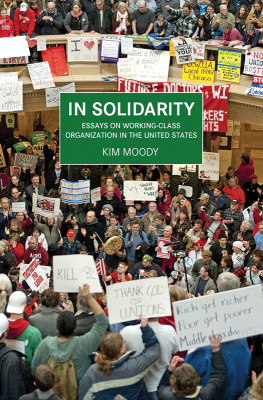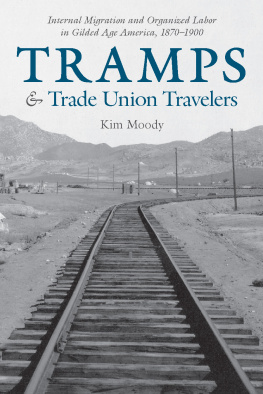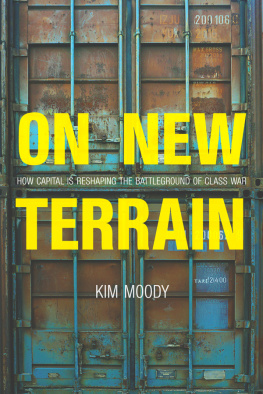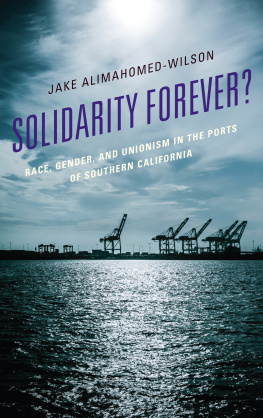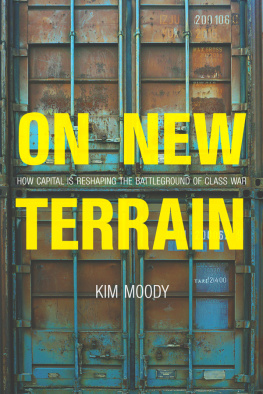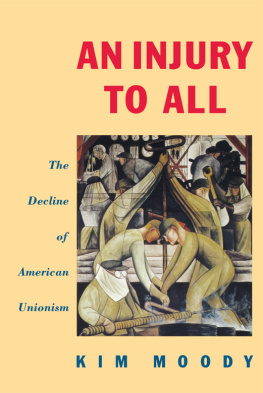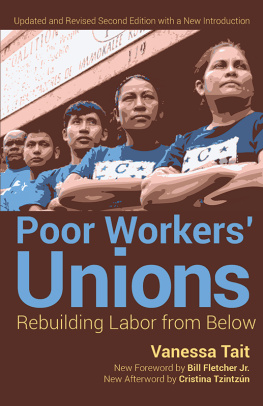Contents
Unions, Strikes, and Class Consciousness Today
Sheila Cohen and Kim Moody
One hundred and fifty years after the publication of the Communist Manifesto, the specter of communism can no longer be said to be haunting Europewhether in the form of mass parties devoted to revolution or the states that inaccurately claimed that title. But class struggle, the inextinguishable source of everything the authors of the Manifesto meant by communism, is, it seems, as irrepressible as ever. Despite ever-stronger siren calls by social-democratic and union leaderships for partnership and cooperation with capital, old-fashioned mass strikes have recently stalked not only Europe but almost every other continent.
By the mid-1990s, this could be seen in the dramatic confrontations between major labor federations and the neoliberal, populist, and even social-democratic governments of such seemingly dissimilar capitalisms as France, South Korea, South Africa, Canada, Peru, Brazil, Argentina, Belgium, Italy, and a dozen others. Alongside, sometimes preceding, and often following these political outbursts was a return to militant confrontation with capitalist employers far larger and more powerful than any Marx and Engels could have envisioned in 1848. If no manifestos appeared, no barricades were thrown up, and the red banners typically bore the initials of a trade union federation rather than a revolutionary party, the dynamics dramatically evoked throughout the original Manifesto were nonetheless clearly at work and a renewed class consciousness was evident across much of the industrial and semi-industrial world.
Despite all the real and apparent differences between Europe 150 years ago and todays capitalist world, two fundamental issues remain equally unresolved: the lack of fully fledged and widespread socialist consciousness and the absence of large-scale organization directed at fostering such consciousness. If Marx and Engels saw in the rise of class conflict the birth of such organization, the moves cited above toward some resurgence of class struggle may offer the opportunity for its rebirthproviding, of course, the socialist left can overcome its own isolation from the reality of this struggle. In many ways, we are faced with the same problems and limitations within the socialist movement itself as were the authors of the Manifesto.
Socialism and the Working Class
In 1848 as now, the socialist movement consisted of a variety of socialisms ranging from the idealist/populist/utopian to the avowedly revolutionary, or at least insurrectionary. The Manifesto s survey of Socialist, and Communist Literature identified the three categories of Reactionary Socialism, Conservative or Bourgeois Socialism, and Critical-Utopian Socialism or Communism, and the forceful rejection by Marx and Engels of all these forms of socialism had one common theme: their mistaken abnegation of class. German or True Socialism, for example, prides itself in representing not the interests of the proletariat, but the interests of human nature, of man in general, who belongs to no class, has no reality, who exists only in the misty realm of philosophical fantasy.
Even in the apparently revolutionary era when the Manifesto was written, the class-oriented politics of Marx and Engels placed them at a peculiar distance from many of the other socialists of their time. One of the most central features of this difference revolved around their consistent adherence to what they referred to as the real working class movement; this was shown most clearly in what was then an almost unique focus on, and endorsement of, trade union organization.
The general absence of this orientation within the intellectual and political milieu of Marx and Engelsmirrored in an equivalent distaste for economistic struggles in our own erais recognized by Hal Draper: Marx was the first leading figure in the history of socialism to adopt a position of support to trade unions and trade unionism, on principle. Marx and Engels were in effect unique, then, among their socialist contemporaries, in consistently following an orientation toward basic trade union organization and struggle as expressions of what they referred to as the real class movement.
But were they correct? Richard Hyman, in his 1971 pamphlet Marxism and the Sociology of Trade Unionism, comments that despite their lifelong involvement with both theoretical and practical aspects of trade unionism, the attention of Marx and Engels to this question is remarkably slight. Although he acknowledges that they provided a sufficient base in their writings to be considered as a coherent theory of trade unionism, Hyman evidently regards this theory as essentially naive. One need scarcely document the failure of subsequent experience to validate [the Communist Manifesto s] optimistic prognosis; yet Marx and Engels never produced a comprehensive revision of their earlier analysis.
There is, however, no unified underlying essence to the character of trade unionism; it is an essentially contradictory phenomenon, and this is what accounts for Marxs and Engelss apparently contradictory responses to the class struggle (or lack of it) taking place around them. The contradictory character of trade unionism, and the dialectical nature of the necessary political response, are not sufficiently or explicitly theorized in the writings of Marx and Engels on trade unionism. Yet the distinction between the consistently subversive potential of basic industrial organization, the grass roots of trade unionism, and trade unions as organizations and, incipiently, bureaucracies, was the underlying reason for their apparent vacillations between feverish excitement about union struggles during working-class upsurges and strong disapproval of the general orientation of the trade unions during periods of acquiescence.
This instinctive nose for the class struggle potential of grassroots trade unionism is evident in Engelss delighted response to the eruption of basic class conflict into the New Unionism of the late 1880s, a development that, though sadly too late for Marx, Engels greeted like a drink of water in the desert of nineteenth-century craft trade unionism. As he wrote excitedly to Lafargue in 1889: These new trades unions of unskilled men and women are totally different from the old organisations of the working class aristocracy and cannot fall into the same conservative ways.... In them I see the real beginning of the movement here. But his instinctual awareness of the always-subversive undercurrents of exploitation-based grassroots class conflict had ensured that the potential for undermining the labor aristocracy was, in Engelss mind, always a possibility. This class-centered optimism is more than a simple naivety; it challenges the essentially static conception of class consciousness frequently embodied in assessments of the unions as implicitly monolithic organizations.
Twentieth-century analysis of trade unions is, of course, more sophisticated in its understanding of the internally stratified nature of unions as social phenomena. Yet, in most of the renditions of economists and sociologists, modern analysis is far more one-sided than Marxs and Engelss instinctive understanding. The internal dynamics and contradictions of trade union life have been buried in a series of static theories, from Beatrice and Sidney Webbs glorification of union bureaucracy and Robert Michelss declaration of its inevitability in his Iron Law of Oligarchy, through the institutional analyses of the American Wisconsin School and the 1950s maturity theorists. All shared a belief in the inevitability and desirability of bureaucracy and stable labor relations. All imagined the direction of development to be a one-way street toward order and the professionalization of labor relations. Marx and Engels, in contrast, saw something deeper beneath the organizational surface, in the living force of the workers themselves. The focus on the working class as the fundamental force in the struggle against capital; the recognition of the common interests of that class that lend it the potential, through struggle, to grow from class in itself to class for itself; the orientation, through this focus, toward the potential of basic trade union struggles as an aspect of class activityall these aspects of Marxs and Engelss analysis both flowed from and led to their consistent awareness of where the class was rather than where they, and certainly their contemporary fellow socialists, might have liked it to be.

